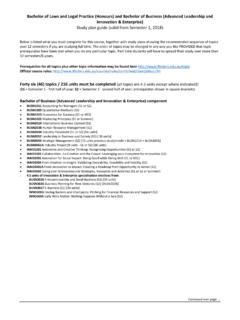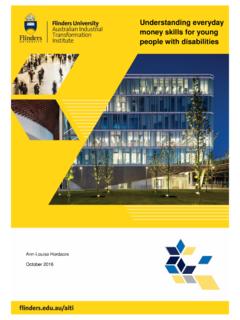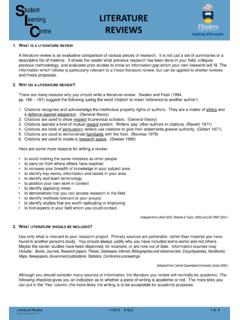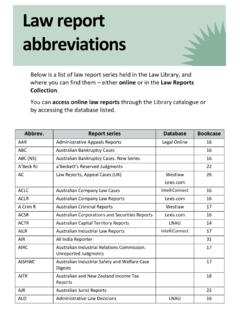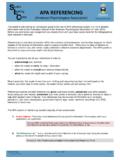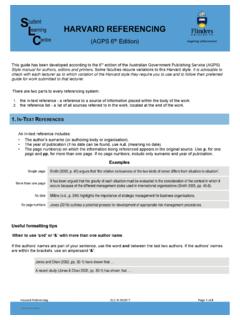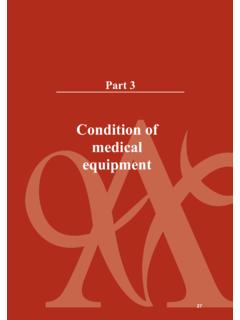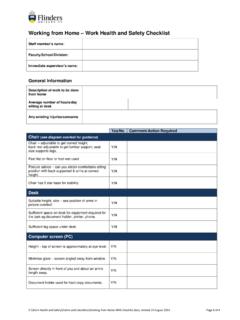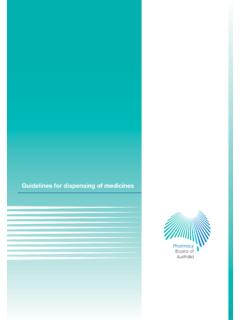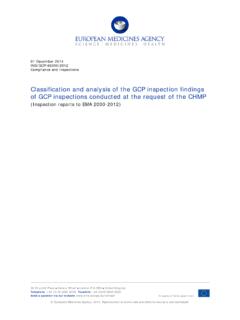Transcription of Learning WRITING AN C entre ARGUMENT - …
1 WRITING AN ARGUMENT tudent C earning L S entre Report WRITING 1/2013 SLC 1 of 4 WHAT IS AN ACADEMIC ARGUMENT ? The term ARGUMENT is used in everyday language to describe a dispute or disagreement between two or more people. However, within written academic work, the presence of an ARGUMENT does not always indicate a disagreement. An ARGUMENT can be used to: Support something we think has merit a position, a point of view, a program, an object. Persuade someone that something would be beneficial to do (or not to do) a particular course of action. Convince someone that something is true, likely to be true or probable a fact, an outcome.
2 Show someone the problems or difficulties with something a theory, an approach, a course of action. Reason with someone to get them to change their mind or their practice. In its most basic form an ARGUMENT is a claim that is justified. What makes something an ARGUMENT is that the claim (or conclusion) is supported by at least one reason. The supporting statements of an ARGUMENT are called premises. WHEN DO I NEED TO USE AN ARGUMENT ? The purpose of an ARGUMENT is to get others to believe what it is you are asserting or claiming. This means you do not need an ARGUMENT if you are just describing something, listing certain items, explaining how something works or just identifying key points or factors.
3 However, you do need to use an ARGUMENT when the point you are making may not be well known or may not be well accepted (it is not obviously true), or where you know there is some disagreement or alternative perspective. Because of this, we have to give reasons to support our position. Essay topics often ask us to take a position on a topic. Is privatisation better than public ownership for developing countries? Why do nurses need to be culturally sensitive? To answer these questions, we need to decide what position we hold and then defend it. This means we need to present a well-reasoned ARGUMENT . WHAT MAKES A GOOD ARGUMENT ?
4 A good ARGUMENT should be convincing. You should find yourself believing the claim, or at least finding the conclusion reasonable. This entails several things: that the premises are acceptable or reasonable (likely to be true) that the evidence or reasons are relevant to the claim that the reasons provide sufficient grounds to lead us to accept the claim. These are called the acceptability, relevance and grounds conditions of an ARGUMENT . If an ARGUMENT satisfies these three conditions, it is likely to be a good ARGUMENT . (see Govier, T 2005, A practical study of ARGUMENT , Thomson/Wadsworth, Southbank, Vic.) An ARGUMENT is NOT: a statement of fact ( of Australians prefer dark chocolate) an assertion or claim ( Wearing a seatbelt reduces the risk of injury) a prescriptive statement ( The Government should spend more money on healthcare) a conditional statement ( If you drink too much, you will damage your brain) a series of statements about the same thing.
5 An ARGUMENT IS: a group of statements of which one is a proposition or claim that is supported by at least one of the other statements (Drinking water daily is good for your health as it cleans out your liver and reduces the level of toxins in your blood). WRITING an ARGUMENT 1/2013 SLC 2 of 4 HOW DO I WRITE AN ARGUMENT ? First, you need to understand the question. What do you have to do? What issues do you need to cover? Then you need to do your research. What do we know about this issue? What do the researchers say? What are the debates, the problems? Then go back to the question and see what you think. What do you think is the answer, given your research and what you now know?
6 This will be your claim. You now need to argue for this position in an academic context. Once you have decided your position, you need to work out how you will put forward your point of view in a well-reasoned and objective way. Ask yourself, what made me come to this conclusion? What did I find convincing? What did I find problematic? These will be the reasons that justify your claim or conclusion. If you found the reasons convincing, then so should the person reading your essay. Remember to acknowledge all the sources you accessed to get your information. A GOOD ARGUMENT Facts or evidence alone do not make an ARGUMENT , they merely support it.
7 It very clear what position or point of view you are taking. What will you be claiming or arguing? out what will support your case: Include supporting evidence Acknowledge counter arguments/counter evidence Use the right language/discourse markers out the implications: Why am I saying this here? What is the point I am trying to make? What does this evidence show? on what you are doing and what you include as you write. sure your essay has a good, clear, logical structure: Your points are relevant They lead towards the conclusion It is easy to follow where you are heading and why THE LANGUAGE OF ARGUMENT Just making a claim and presenting evidence to support that claim will not qualify as an ARGUMENT unless you use the right connectives, indicator words or discourse markers.
8 This will show the logical connections between your ideas, the literature and the statements you are making. It will indicate why you have included a particular piece of information, and its relevance to your overall claim. For supporting premises, you need to use words like: because (of) .., given that .., the reason is that .., not only .. but also .., whether or not .., due to .., since .., in order to .., in order that .., rather than .., if .. then .. Examples: The Government should spend more money on healthcare because .. Given that .., the Government should spend more money on healthcare. For conclusions, you need to use words like: so.
9 , therefore .., thus .., then .., it follows that .. Examples: Given that wearing a seatbelt reduces the risk of injury, then .. Wearing a seatbelt reduces the risk of injury. Therefore .. WRITING an ARGUMENT 1/2013 SLC 3 of 4 USING THE RIGHT LANGUAGE The introduction is usually the only place where you can use 'I' (unless you are WRITING a self-reflective paper which asks for your personal views or reactions). Even then, some lecturers prefer you not to use it at all. Avoid using expressions like in my opinion or I think. The following gives examples of how to use 'I' appropriately and how to avoid using it altogether.
10 The use of 'I In this paper: I discuss/ will , I argue / will argue , I will show .., I will , I will put forward the claim , I refer to the work of/theory Avoiding the use of I (Changing the subject) This paper discusses .., This essay puts forward the claim that .., This paper argues that .., The findings indicated .., The idea was to .., The intention of the research was to .. Using the passive voice It will be argued that .., Four articles will be analysed .., Eight nurses were interviewed .., It was found that .. USEFUL DISCOURSE MARKERS There is a range of different words you can use that indicate the logical connections between your ideas, your attitude to the research you have included and the relationship between the evidence and what you are claiming.
